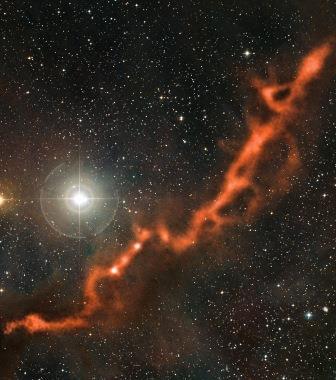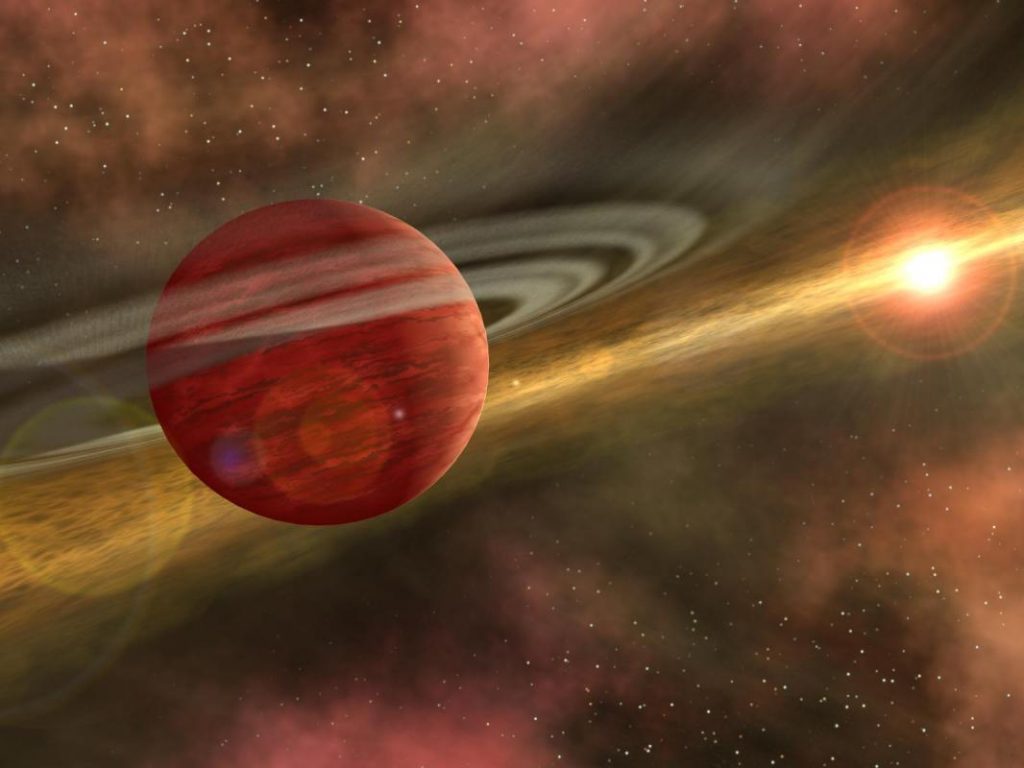2015 September : Hot Jupiters courting baby stars?
New results suggest that SPIRou will boost our understanding of planet formation
Although first detected 20 years ago, hot Jupiters are still enigmatic bodies. These celestial objects are giant Jupiter-like exoplanets that orbit 20 times closer to their host stars than the Earth does to the Sun. Using the ESPaDOnS spectro-polarimeter on the 3.6m Canada-France-Hawaii Telescope atop Mauna Kea, a dormant volcano on the big island of Hawaii, an international team of astronomers led by JF Donati secured preliminary evidence that hot Jupiters can be generated in as little as a few million years – a timescale equivalent to one week if the 10-billion-year-lifetime of a planetary system were scaled down to a human life. This discovery, published in the Monthly Notices of the Royal Astronomical Society (MNRAS), will help us better understand how planetary systems like (or unlike) the solar system form and evolve into maturity.
In our solar system, rocky planets like the Earth or Mars are found near the Sun whereas giant planets like Jupiter and Saturn orbit much further out. In 1995 a giant planet was discovered sitting very close to its host star. Since then, astronomers have demonstrated that such planets must form in the outer regions of the protoplanetary disc – the matrix from which both the central star and surrounding planets are born – then migrate inwards and yet some can avoid falling into their host star. This could happen either very early in their lives, when still embedded within their primordial disc. Or much later, once multiple planets are formed and mutually interact in a rather unstable choreography – with some being pushed inwards to the immediate vicinity of their stars. JF Donati’s team has just discovered preliminary evidence that the first of these two scenarios is occurring.

Although potentially very informative about planet formation, young stars are extremely challenging to observe. Being enormously active and strongly magnetic, baby stars are covered with huge spots hundreds of times wider than those of our Sun, which generate perturbations in their spectra much larger than those of orbiting planets. As a result, their planets are quite tricky to detect, even in the case of hot Jupiters. The authors used a tomographic technique inspired from medial imaging to accurately model the field and spots in order to clean out their polluting effect and discover the much weaker signal from a putative giant planet.Although more data are required for a definite validation, this first result is quite promising and clearly demonstrates that the technique the team has devised is powerful enough to solve the puzzling question of how hot Jupiters form and end up close to their host stars.
Thanks to its operation at near infrared wavelengths at which young stars are far brighter, such observations will be much easier from 2017 with SPIRou.
Learn more about this discovery here



